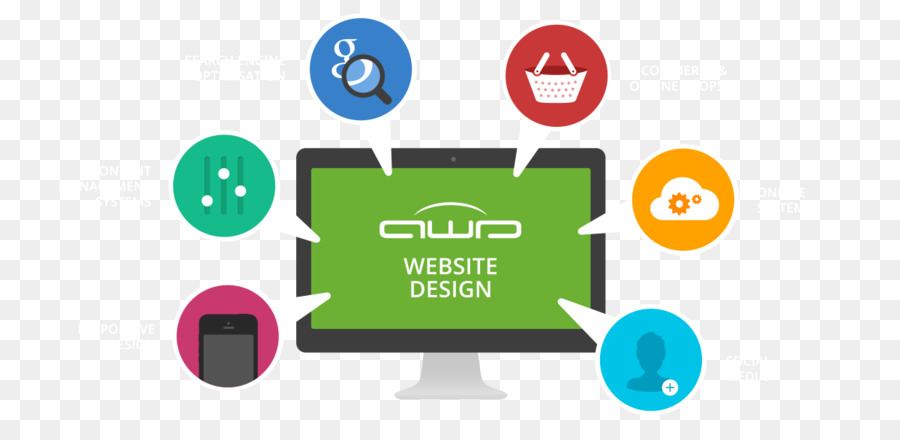The Growth Of Internet Site Layout: From Earlier Times To Currently
The Growth Of Internet Site Layout: From Earlier Times To Currently
Blog Article
Personnel Author-Bradshaw Hyldgaard
In the past, websites were basic and concentrated on info. Navigating was direct, and layout was for desktop computers. Currently, individual experience is essential. Data overviews layouts for very easy navigation. Responsive layouts suit different tools. Today, dark setting lowers stress, and minimalist menus improve navigating. Interactive functions engage users, and strong visuals attract attention. AI combination enhances engagement. See how style has progressed to enhance your on-line journey.
Early Days of Web Design
In the very early days of website design, simpleness reigned supreme. Internet sites were standard, with limited shades, fonts, and formats. The focus got on giving details as opposed to showy visuals. Customers accessed the net via slow-moving dial-up connections, so speed and capability were key.
Navigation menus were straightforward, generally situated on top or side of the page. Sites were developed for home computer, as mobile surfing had not been yet prevalent. Content was king, and developers prioritized simple readability over complicated layout elements.
HTML was the key coding language used, and designers had to function within its restraints. Animations and interactive functions were minimal contrasted to today's standards. Websites were fixed, with little dynamic content or personalized customer experiences.
Surge of User-Focused Design
With the advancement of web site layout, a shift in the direction of user-focused design concepts has ended up being increasingly famous. Today, creating internet sites that prioritize user experience is critical for involving visitors and achieving company objectives. User-focused layout involves understanding the requirements, choices, and behaviors of your target audience to tailor the internet site's layout, material, and features accordingly.
Designers currently conduct complete research, such as customer surveys and usability screening, to collect understandings and responses straight from customers. This data-driven strategy aids in developing user-friendly navigating, clear calls-to-action, and visually appealing user interfaces that reverberate with visitors. By positioning the individual at the facility of the design procedure, sites can provide an extra customized and delightful experience.
Responsive style has actually also emerged as a vital facet of user-focused design, making sure that sites are enhanced for numerous gadgets and display dimensions. This flexibility improves availability and usability, dealing with the diverse means customers connect with internet sites today. Fundamentally, the surge of user-focused layout symbolizes a shift in the direction of developing electronic experiences that prioritize the demands and assumptions of completion user.
Modern Trends in Web Design
Check out the most up to date fads shaping website design today. One famous trend is dark setting design, using a sleek and modern appearance while decreasing eye stress in low-light atmospheres. An additional crucial fad is minimalist navigation, streamlining menus and enhancing user experience by focusing on essential elements. Including micro-interactions, such as computer animated buttons or scrolling results, can create an extra appealing and interactive internet site. https://www.fool.com/the-ascent/small-business/crm/articles/b2b-marketing-strategies/ remains crucial, ensuring smooth individual experiences throughout various devices. Furthermore, utilizing vibrant typography and unbalanced designs can include visual passion and draw attention to certain web content.
Incorporating AI technology, like chatbots for client support or individualized suggestions, enhances user involvement and enhances procedures. Ease of access has also end up being a substantial pattern, with developers prioritizing inclusive design methods to cater to varied customer needs. Embracing sustainability by enhancing internet site efficiency for speed and effectiveness is one more arising pattern in web design. Working together with user feedback and information analytics to repeat and enhance style continuously is vital for remaining pertinent in the ever-evolving digital landscape. By welcoming these contemporary patterns, you can develop a visually enticing, straightforward site that resonates with your target market.
Conclusion
As you assess the advancement of internet site style from the early days to currently, you can see just how user-focused layout has actually become the driving pressure behind modern trends.
Accept the journey of modification and adjustment in web design, constantly maintaining the user experience at the forefront.
Stay current with the current patterns and innovations, and never quit developing your strategy to create visually spectacular and straightforward web sites.
Advance, adjust, and produce - the future of website design remains in your hands.
